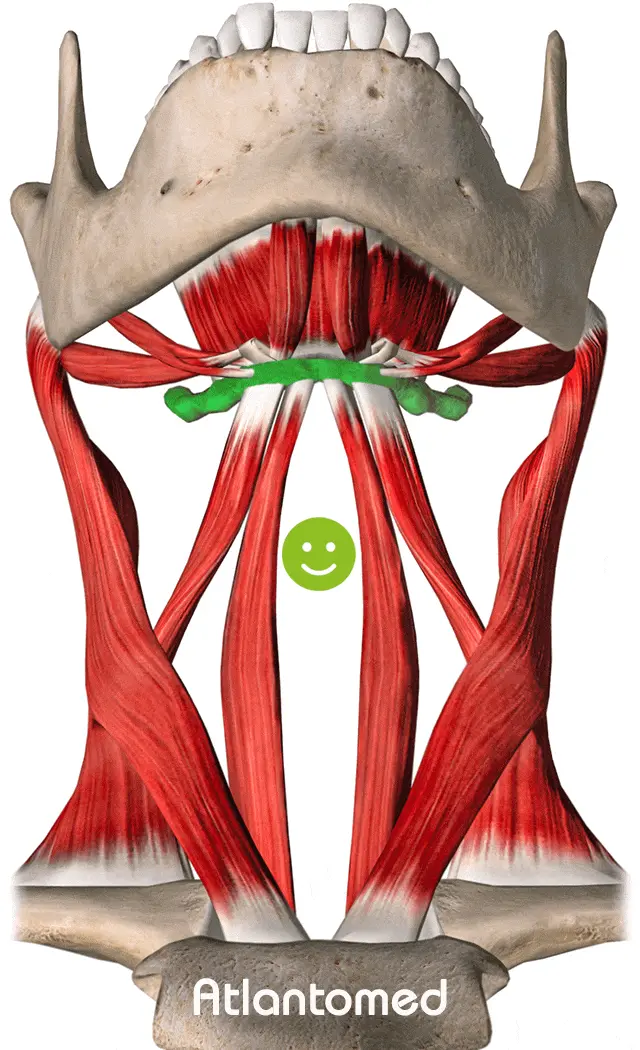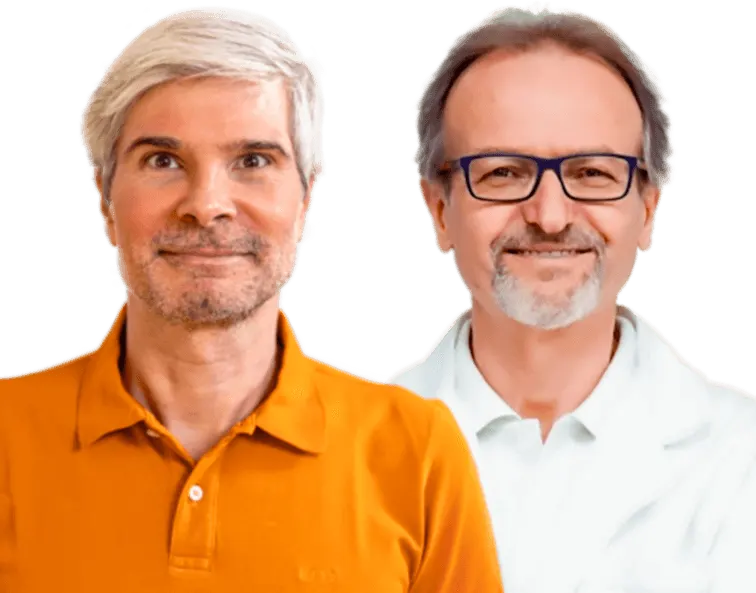Dental malocclusion, displaced jaw and Atlas
We have observed that correcting the Atlas can positively influence defective alignments of the mandible in relation to the skull and the associated dental malocclusion. Conditions such as trigeminal neuralgia, cranio-mandibular dysfunction or the TMJ (Temporomandibular Joint) syndrome may be aggravated by Atlas dysfunction.
Many people report significant improvements in mandible alignment and consequently in dental occlusion after Atlas treatment. In particular, mild dental malocclusions may spontaneously resolve following Atlas realignment.
There are cases where, after Atlas correction, posture recovers complete symmetry, while in others, only partial improvements are observed. We therefore questioned what might cause this variability in reactions.
After careful observation, we concluded that in cases where posture improved only partially after Atlas correction, there was evident misalignment of the mandible in relation to the skull, indicating a cranio-mandibular dysfunction.
In cases of significant cranio-mandibular dysfunction, Atlas realignment alone may not be sufficient to fully restore postural balance. In such circumstances, it becomes necessary to intervene directly on the misaligned mandible, particularly on the teeth, which are the primary determinants of the mandible's spatial positioning in relation to the skull.
Jaw Deviation Test

Displaced mandible
Checking for mandibular deviation is a simple procedure for anyone with a keen eye. Look at your face in the mirror, keeping your mouth closed and relaxed with teeth together. Alternatively, you can take a selfie under the same conditions and then observe it closely.
The example image clearly shows what to focus on. The reference lines help evaluate the alignment of the mandible in relation to the skull. You can imagine these lines directly on your reflection in the mirror or trace them on the photo.
When the mandible is properly aligned, the horizontal line passing through the eyes is parallel to the one passing through the lips (L=R in the image). Additionally, the center of the chin will align with the median line of the face (vertical green line).
If you notice a deviation from the optimal situation, there is a mandibular displacement.
An even more precise assessment can be obtained through an occlusal plane analysis performed by a dentist specializing in this field.
How to correct an incorrect mandibular position?
To address significant mandibular deviation, resolve Cranio-Mandibular Dysfunction, and improve the associated dental malocclusion, it is essential to intervene on the contact area and relative height of the teeth. Although treatments targeting the mandibular muscles can provide relief, their effects are only temporary. The height of the teeth plays a crucial role in defining the spatial position of the mandible in relation to the skull.
There are various ways to modify the height and contact area of the teeth. It is advisable to discuss these options with a competent dentist/gnathologist who has extensive knowledge of the relationship between posture and dental occlusion. The final criterion for success is simple: after treatment, is the mandible aligned according to the described tests? Unfortunately, it is common to encounter individuals with severely displaced mandibles and serious malocclusion who believe they have resolved the problem simply because they use a bite. While a bite can be helpful as part of a treatment, on its own it does not ensure a definitive correction.
If the test indicates a misaligned mandible, then you have Cranio-Mandibular Dysfunction, regardless of what your dentist may have said or done!
Cranio-Cervico-Mandibular Dysfunction is a problem that should not be underestimated if you want to maintain good health and an efficient body over the years!
Another important point for recovering and maintaining good health is the following: The mouth must absolutely be free of metals: amalgams, gold, titanium, or other alloys. Regardless of the metal (including implants), these should not be present in the mouth! Many experts in the field today agree that the presence of metals in the mouth can have long-term harmful effects on health.
However, it is important to recognize that sometimes ideal solutions are not possible, and one must settle for the "lesser evil." The consequences of having metals in the mouth can be very insidious, developing gradually and being difficult to trace directly to oral problems.
An excellent option for correcting a misaligned mandible and associated dental malocclusion is the use of the Bionator, an orthodontic device that helps restore the correct functional balance between the mandible, skull, and body. Consult a specialist to evaluate whether this solution is suitable for your specific case: BIONATOR.
Study on the relationship between Atlas and jaw:
How does the jaw affect posture?

BEFORE
AFTER
Under the jaw is the hyoid bone, which is not only connected to the jaw through muscles but also linked to the back of the skull near the Atlas. The hyoid bone is the only independent bone in the body, meaning it does not articulate with any other bones.
The hyoid bone functions like a spirit level, similar to those used by builders, and plays a crucial role in regulating posture.
The position of the hyoid bone is directly influenced by the jaw. A shift in the jaw causes the hyoid bone to move, altering the tension of descending muscle chains.
The descending sequence that determines postural balance is as follows: the teeth and Atlas alignment influence the jaw position, the jaw affects the hyoid bone position, and the hyoid bone regulates the body's overall posture.
Muscle contractures resulting from Atlas misalignment and jaw deviation cause asymmetric tensions on the hyoid bone, leading to postural imbalances such as a tilted pelvis or one shoulder being higher than the other.
This mechanism explains why manual pelvic corrections performed by chiropractors and osteopaths are often temporary: the root cause lies higher up. Unless the Atlas and, if necessary, the jaw are corrected, the pelvis will inevitably return to a tilted position. Evidence of this is seen when correcting the Atlas and jaw causes the pelvis to realign spontaneously and remain stable.
Practice has shown that the orthopedic theory, which claims that pelvic obliquity is caused by foot defects or a shorter leg, is often incorrect. The problem is usually related to Atlas and jaw dysfunctions, which affect the entire postural system.
Displaced jaw: intervene before puberty
German dentist Dr. Udo Bär conducted tests on hundreds of patients and concluded that jaw occlusion plays a key role in posture: postural information is stored/coded in the intercuspation of the teeth.
Through repeated tests and measurements during different stages of children’s growth, Dr. Bär observed that posture remained influenceable ONLY as long as the first permanent molar (after the loss of baby teeth) had not yet reached contact (intercuspation) with its opposing tooth.
During these tests, the pelvis was measured and corrected if necessary. In subsequent measurements taken at regular intervals, the pelvis remained aligned and balanced as long as no accidents or serious falls occurred. The pelvic correction was permanent if performed before the first molar fully developed. Dental molds taken during follow-ups showed that the initial pelvic correction even led to some spontaneous adjustment of tooth position.
In contrast, when pelvic misalignment was corrected after the first molar had reached occlusal contact (typically between ages 10 and 14), the pelvis tended to return to a misaligned position.
These observations highlight the importance of entering puberty with correct posture. Otherwise, incorrect posture is "stored/coded" in the teeth, making later corrections much more difficult and costly.
Dental Malocclusion: Intervention in Adulthood
In adulthood, the cusps, or the chewing surfaces of the teeth, can undergo significant changes due to cavities, improper tooth positioning, extractions, or wear from nighttime grinding (bruxism). These changes alter the dental occlusion, which in turn contributes to the deterioration of posture. To regain proper posture, it is crucial to restore the spatial position and balance of the jaw, which requires appropriate dental adjustments. Simply treating the masticatory muscles would only lead to a temporary solution.
BEFORE making dental corrections, it is essential to thoroughly study the dental malocclusion and posture to clearly define the desired outcome. Without a preliminary study, there is a risk of worsening an already fragile situation and wasting money.
Study on mice demonstrates the relationship between malocclusion and scoliosis:
Video on Dental Malocclusion
Back and headaches can also result from dental malocclusion or cranio-mandibular dysfunction. In the health program Ippocrate, Professor Giorgio Chiogna, head of gnathology at the Don Gnocchi center in Rome, discusses this topic.
Video interviews on dental malocclusion
testimonies after Atlas realignment
What People Say About Us
Beware of those who disguise a simple cervical manipulation as Atlas realignment and those who offer low-quality imitations of our method. The results speak for themselves: over 10,000 testimonials and reviews in various languages make us unique. Click to discover opinions, ratings, and authentic experiences shared by those who have experienced Atlas correction with Vibro-Resonance AtlantoMed:
Scientific Literature on Cranio-Mandibular Dysfunction

- Sternocleidomastoid muscle imbalance in a patient with recurrent headache.
- Influence of different upper cervical positions on the masticatory muscles.
- Natural head posture in edentulous patients before and after oral rehabilitation.
- Craniocervical posture in patients with temporomandibular disorders.
- Postural control of the human mandible.
- Relationship between temporomandibular dysfunction and head posture.
- Examining the effect of complete dentures on head posture and craniovertical angle.



